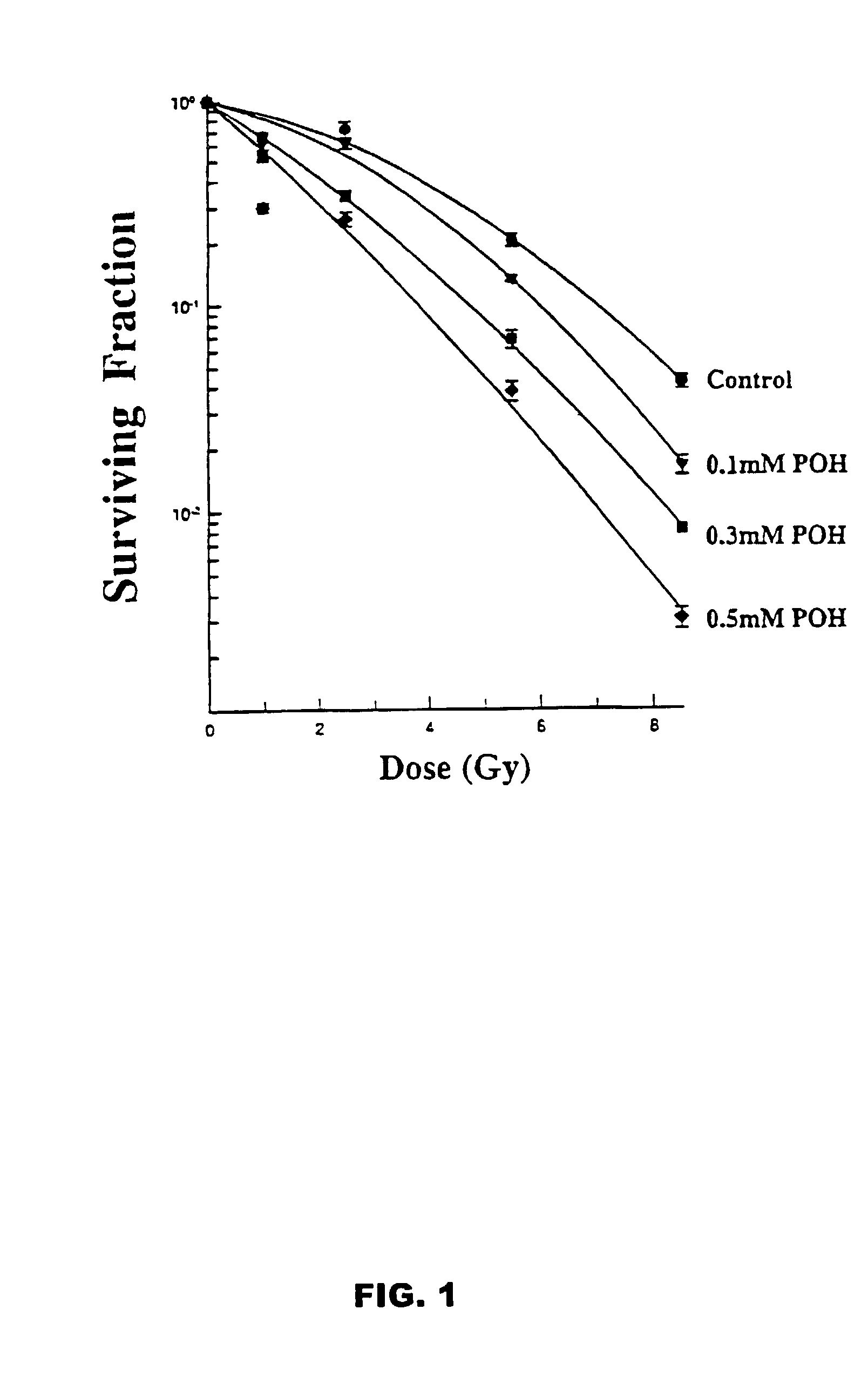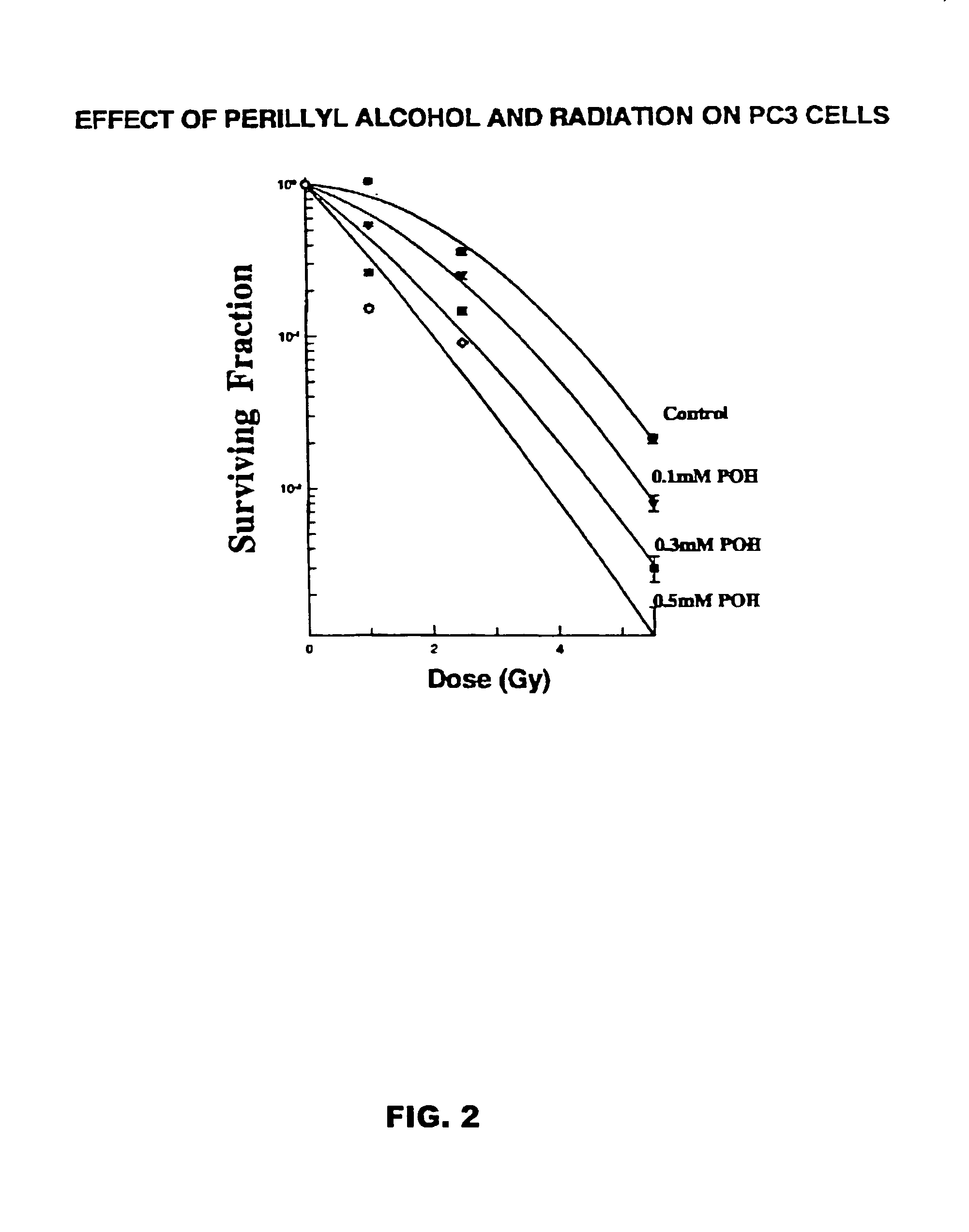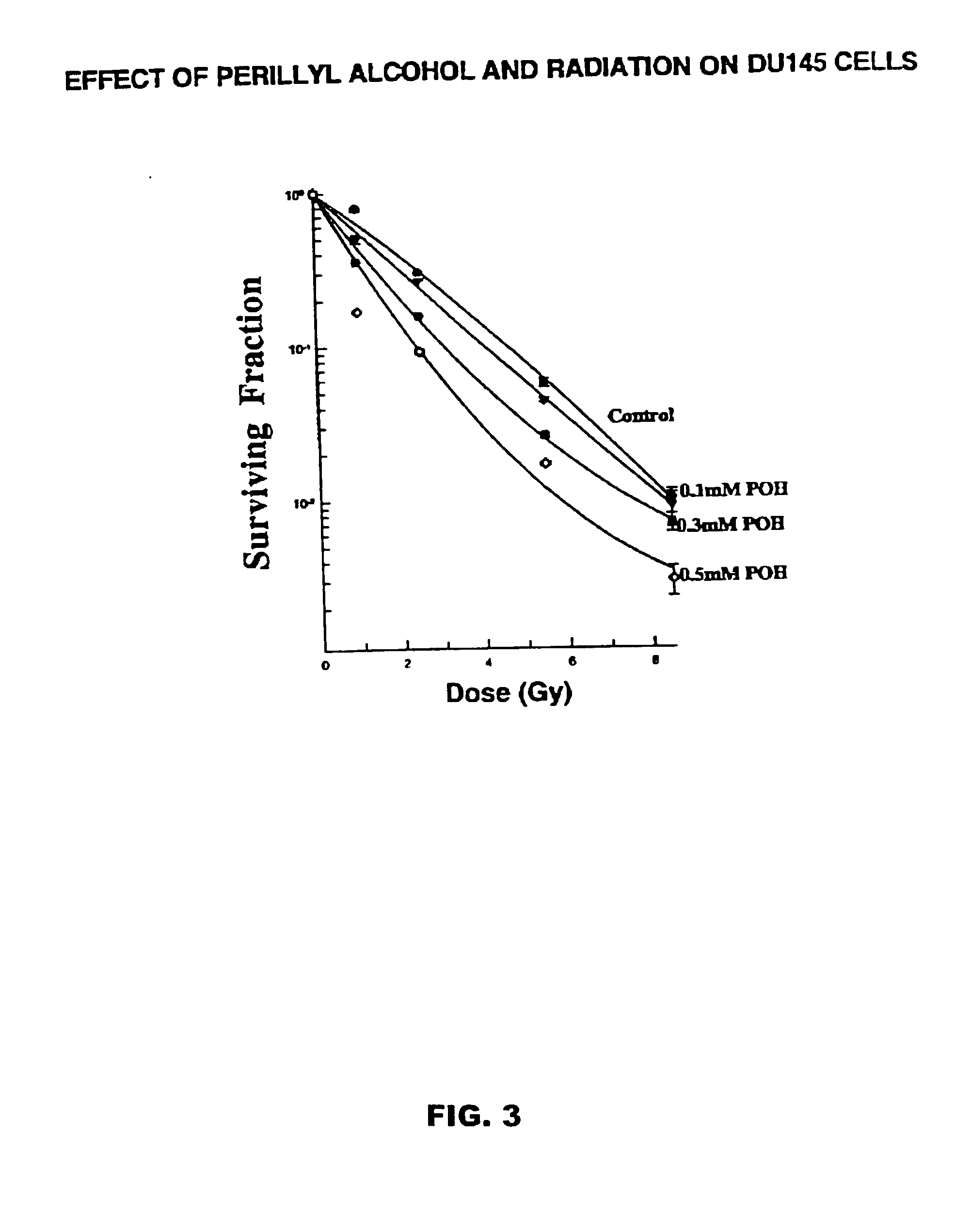Monoterpenes and sesquiterpenes as chemotherapeutic and radiation sensitizers and immunomodulators
a technology which is applied in the field of monoterpenes and sesquiterpenes as chemotherapeutic and radiation sensitizers and immunomodulators, can solve the problems of prolonging survival, poor survival of patients with malignant gliomas treated by surgical resection alone, and a median survival of 4-6 months
- Summary
- Abstract
- Description
- Claims
- Application Information
AI Technical Summary
Problems solved by technology
Method used
Image
Examples
example 1
[0064] Example 1
T98G Cell Line and POH
[0065] Cell Line: The T98G cell line was derived from a resection specimen obtained from a patient with glioblastoma multiforme. T98G cells express endogenous mutant p53 and introduction of wild-type p53 sensitizes these cells to radiation. The radioresistance of this cell line has also been attributed to the presence of high intracellular levels of GSH, which down-regulates NF.kappa.B binding activity after exposure to ionizing radiation. A clonogenic survival assay was used to assess the response to treatment in vitro, as it is a measure of reproductive capacity.
[0066] Clonogenic Survival Assays: The T98G cell line was obtained from ATCC and maintained in DMEM-F12 medium containing 10% fetal bovine serum, 1% penicillin, streptomycin and 1 mM non-essential amino acids in a humidified incubator at 37.degree. C. Stock solution of POH was made in the medium. One set of plates was treated with graded doses of POH (0.1 mM to 1 mM) for a period of 72...
example 2
Additional Results with Other Monoterpenes and Cell Lines
[0071] FIGS. 2-14 illustrates additional work with other monoterpenes and cell lines.
[0072] FIG. 2 demonstrates the effect of perillyl alcohol and radiation on PC3 cells.
[0073] Subconfluent cultures prostate cancer cell line PC3 were treated with 0.1-0.5 mM of POH for 72 hours and subsequently to increasing doses of radiation from 0.1 Gy to 8.5 Gy. Control cells were treated with the indicated doses of radiation alone. The cells were harvested and an optimum number of cells were allowed to growth for 14 days. The resulting colonies were stained and counted. Each graphed point represents mean values .+-.SE values of triplicate dishes.
[0074] FIG. 3 demonstrates the effect of perillyl alcohol and radiation on DU145 cells.
[0075] Subconfluent cultures of prostate cancer cell line DU145 were treated with 0.1-0.5 mM of POH for 72 hours and subsequently to increasing doses of radiation from 0.1 Gy to 8.5 Gy. Control cells were treated...
example 3
Effect of Perillyl Alcohol on Tumor Cell Lines
[0088] In the present study we evaluated the effect of POH treatment on a panel of human glioma (T98G, MO59K, U-87, U-373, U-251), prostate cancer cell lines (PC3 and DU145), colon (DLD-1, HT29), melanoma ( Mel5, M21). Clinically relevant concentrations (0.1 mM-1 mM) of POH appeared to be relatively non-toxic. Higher concentrations of POH (1 mM) resulted in cell death via apoptosis. Referring to FIG. 15A, subconfluent cultures of the indicated glioma (T98G, M059K, U251, U353, U87MG), prostate (DU145, PC3, colon (DLD-1, HT29) and melanoma (Mel5 and M21) cell lines were treated with varying concentrations of POH (0.1 mM-1 mM POH) dissolved in medium. The percent of cells undergoing apoptosis was determined at 72 hours by flow cytometry of propidium iodide (PI) stained cells. The histograms demonstrates the presence of the sub G.sub.0 / G.sub.1 peak. Each point is an average of duplicate dishes (variation <5%). We conclude that POH induced ap...
PUM
| Property | Measurement | Unit |
|---|---|---|
| intrinsic resistance | aaaaa | aaaaa |
| plasma | aaaaa | aaaaa |
| concentration | aaaaa | aaaaa |
Abstract
Description
Claims
Application Information
 Login to View More
Login to View More - R&D
- Intellectual Property
- Life Sciences
- Materials
- Tech Scout
- Unparalleled Data Quality
- Higher Quality Content
- 60% Fewer Hallucinations
Browse by: Latest US Patents, China's latest patents, Technical Efficacy Thesaurus, Application Domain, Technology Topic, Popular Technical Reports.
© 2025 PatSnap. All rights reserved.Legal|Privacy policy|Modern Slavery Act Transparency Statement|Sitemap|About US| Contact US: help@patsnap.com



